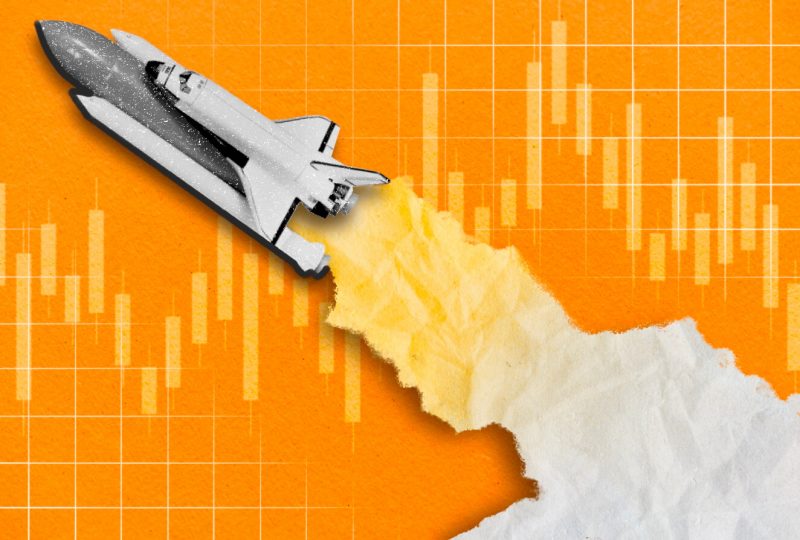A Few Huge Stocks Are Driving the Stock Market Rally. It Could Be a Bad Sign.
Apr 06, 2023

The first three trading months of 2023 have been a tale of the wealthy and the less fortunate.
After a challenging March, the good news for investors is that things are improving, making the stock market rally. The average stock is up just 1% this year compared to the S&P 500’s 7% gain. A rally with narrow leadership is more likely to be unstable than one with a larger participation of stocks.
The growth in the market capitalization-weighted index as a whole is due to a few mega cap corporations at the top: According to Torsten Slok, chief economist at Apollo Global Management, the 20 largest S&P 500 corporations have added roughly $2 trillion in market value this year, compared to $170 billion for the remaining 480 equities.
It results from both significant price rises and significant beginning market values in stock market rally. Apple’s (AAPL) market worth has increased this year by 26% to $2.6 trillion.According to statistics from Goldman Sachs, those factors alone have added 1.6% to the S&P 500.
The 19% increase in Microsoft (MSFT) and the 83% increase in Nvidia (NVDA) have added more than 1%.The same names caused the S&P 500 to decline in 2022.The impact of those mega-sized stocks on the index is far greater than the impact of this year’s largest losers.
With a 37% decline, Charles Schwab (SCHW) has only detracted 0.15% from the S&P 500. First Republic Bank (FRC) is down 88% in 2023; this has a mere 0.08% impact on the index.Pfizer (PFE), down 20% this year, has only cost the S&P 500 0.18% of its value.
“Our view is that mega cap tech has been a beneficiary of the selling in other sectors, but ultimately once that rotation was done, the indexes would be quite vulnerable,” wrote Jonathan Krinsky, chief market technician at BTIG, on Wednesday. “This dispersion is something that often occurs in the latter innings of stock market rally.”
There is less room for mistake – if the winds shift and Apple, Microsoft, and a few other stocks stumble, the S&P 500 is also susceptible. It’s also a more difficult situation for stock pickers, as there are fewer winners to select from.
Individual stocks aren’t everything. The year-to-date disparity is due to macroeconomic dynamics. A steep drop in bond rates, notably over the past month of financial upheaval, has contributed to the S&P 500’s climb this year as investors reduced their expectations for more Federal Reserve interest rate rises. This has been especially noticeable in growth-oriented equities and sectors: the Nasdaq Composite index has increased by 15% in 2023, while the S&P 500 technology sector has increased by 19%.
However, the banking and economically vulnerable industries have declined. It’s a prescription for a wide gap in sector performance, which has only just begun to close. According to Bespoke Investment Group statistics, around 47% of S&P 500 technology companies were trading above their 50-day moving averages as of Wednesday’s closing, compared to 61% on Tuesday and 43% of the entire index. Not only has growth recently increased, but so have conservative, bond-proxy sectors due to lower bond rates. On Wednesday, 93% of S&P 500 utilities and 68% of consumer staples were trading above their 50-day moving averages.
This compares with a terrible run for shares of banks, credit-dependent real estate equities, and cyclically sensitive industries until recently. After the closing on Wednesday, just 7% of REITs, 19% of financials, 22% of industrials, and 24% of materials companies were trading above their 50-day moving averages.
Nonetheless, this is a significant improvement from two weeks earlier, when just 18% of S&P 500 companies were trading above their 50-day moving averages. Market breadth looks to have bottomed in mid-March before improving late in the month and early in April.
After the announcement of an unexpected production cut by OPEC and its partners over the weekend, energy stocks have joined the rise this week. According to Bespoke, the S&P 500 energy sector is up 4% in three days, and the number of companies in the sector above their 50-day moving averages has increased to 74% from 13%.
The largest stocks at the top of the market continue to anchor the 2023 rise – a pattern that cannot sustain forever. Things are trending in the right way, but investors will need to see broader involvement to have more faith in the rise.




